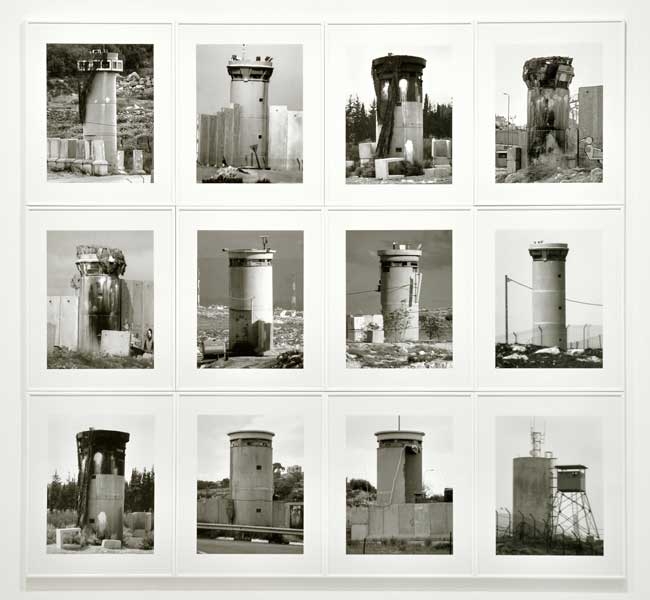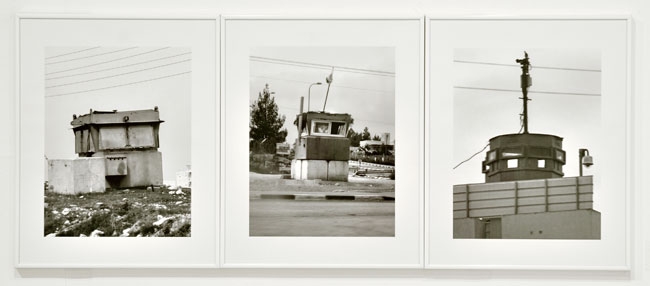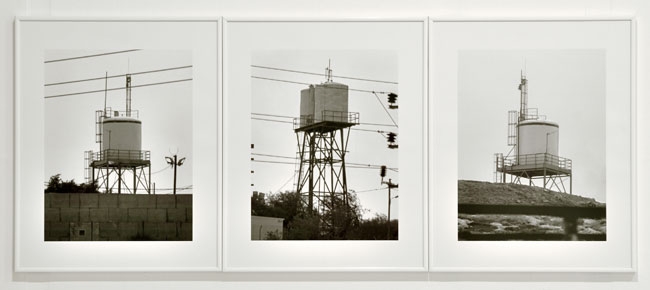The Miradors series comprises 26 photographs organised in subsets in accordance with various formal criteria and showing Israeli observation posts in the West Bank. These elements forming an unsettling typology were photographed in dangerous conditions by a Palestinian photographer working on behalf of the artist. Indeed, being from Gaza, Batniji is unable to travel to the West Bank.
These watchtowers evoke a military and geopolitical situation: Israeli occupation of the Palestinian territories. But while these images would seem to be essentially documentary, acts of witness, they are also grounded in another field, art history. For this work reprises the photographic approach of Bernd and Hilla Becher, visually faithful to the point of illusion. In the late 1950s these German artists began documenting the vestiges of industrial architecture in Germany, and then further afield. Their photographic protocol demanded that the built object be, as far as possible, isolated from its surroundings, as if to indicate the obsolescence of its function and establish it as a simple graphic, sculptural motif.
By mimicking the style of the Bechers, Batniji intertwines two strands of photographic history, which are also two histories of looking, substituting journalistic representations of life in Palestine, which are often based on current events, especially spectacular ones, with ambiguous images informed by art history, and, conversely, substituting the subjects and technological themes of the Bechers with those of the reporter, and even the war reporter, which undercut any attempt at aestheticisation. Finally, where the Bechers’ scholarly approach opened the path to the heritage industry, Batniji’s work manifestly calls on the viewer to make these mushrooming buildings a thing of the past.
From apparent neutrality to subjective involvement on the part of the artist, the subject is very much one of viewpoint (which recalls the etymology of mirador).
Irène Burkel
Translated by Charles Penwarden




Follow us on: